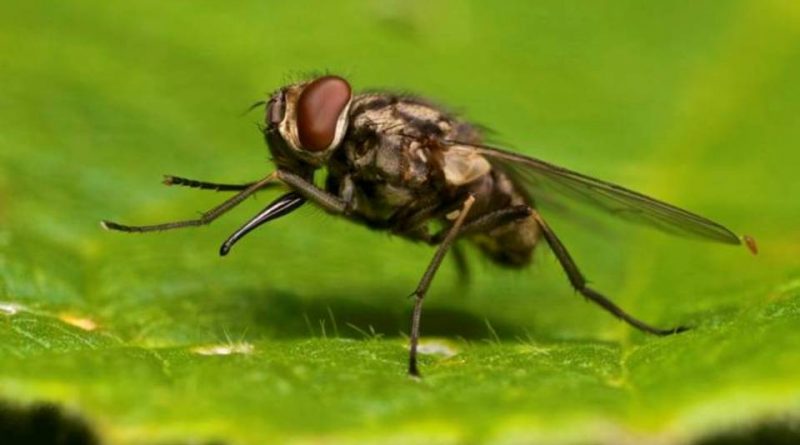Stomoxys calcitrans
Stomoxys calcitrans
The Stable fly (Stomoxys calcitrans Linnaeus, 1758) is an insect belonging to the Muscidae family.
Systematics –
From a systematic point of view it belongs to:
Eukaryota Domain,
Kingdom Animalia,
Sub-kingdom Eumetazoa,
Branch of Bilateria,
Phylum Arthropoda,
Subphylum Tracheata,
Superclass Hexapoda,
Insecta class,
Subclass Pterygota,
Endopterygota cohort,
Superorder Oligoneoptera,
Section Panorpoidea,
Order Diptera,
Suborder Brachycera,
Cyclorrhapha cohort,
Section Schizophora,
Calyptratae subsection,
Superfamily Muscoidea,
Family Muscidae,
Subfamily Muscinae,
Tribe Stomoxyini,
Genus Stomoxys,
S. calcitrans species.
The terms are synonymous:
– Conops calcitrans Linnaeus, 1758;
– Musca occidentalis Walker, 1853;
– Stomoxis dira Robineau-Desvoidy, 1830;
– Stomoxis inimica Robineau-Desvoidy, 1830;
– Stomoxys cybira Walker, 1849;
– Stomoxys parasitica Fabricius, 1781.
Geographic Distribution and Habitat –
The Stable fly, even if more widespread in breeding areas and farms, has no particular preferences regarding the host so it can sting any mammal including humans, which attacks above all to the ankles, even through socks. It is a very aggressive, annoying and voracious insect.
However, its typical habitat is that of animal farms and its larvae can be observed in decaying manure near cattle and poultry.
Morphology –
The horse fly is similar to the house fly.
It differs from this for its slightly larger dimensions and for the stinging-sucking mouthparts.
Upon closer examination, he has a slightly larger and more spotted abdomen.
Adults are generally about 6-8 mm long and are lighter in color than the housefly.
Attitude and Life Cycle –
The Stable fly can overwinter in all stages of development.
The biological cycle of this insect begins with the laying of the eggs which is carried out singly or in groups of 25-30 units. The incubation has a duration of 1-4 days and is conditioned by temperature and humidity.
The larvae are coprophagous and live in manure. Larval development can occur on various decaying organic substrates, characterized by high bacterial load, piled up both inside the stables and outside and the time required to complete the development cycle is strongly influenced by the temperature; in fact the egg-adult cycle takes about 60 days at 15 ° C and about 12 days at 30 ° C.
This insect pupates after two moults.
Adults are short-lived: the male dies soon after mating, and the female shortly after spawning.
Ecological Role –
Stomoxys calcitrans is a parasitic insect that is active only during the day and, once its victim has been located, lands and begins to suck blood by piercing the skin usually at the knees, neck and lower parts of the legs, where it finds the vessels. blood more exposed.
It has a marked aggressiveness and voracity, so it often remains attached to animals even for a few minutes, especially if it is positioned in a particularly fleshy point, such as chest or muscle bands. It typically stings pets, but occasionally it can attack humans as well.
It mainly frequents the stables and, in the case of severe infestations, can reduce livestock to anemia, weight loss and reduced milk production, as well as favoring the spread of diseases (horse fever, brucellosis, swine flu) and parasites, with serious economic damage for farmers.
For this reason, the infestations of Stomoxys calcitrans can represent an important health and economic problem in livestock farms, especially in the summer season, but it is still able to remain active all year round.
Like other insects of the same genus, hygienic conditions and frequent litter replacement are important to diminish the number of individuals present.
Guido Bissanti
Sources
– Wikipedia, the free encyclopedia.
– Russo G., 1976. Agricultural Entomology. Special Part. Liguori Editore, Naples.
– Tremblay E., 1997. Applied entomology. Liguori Editore, Naples.

